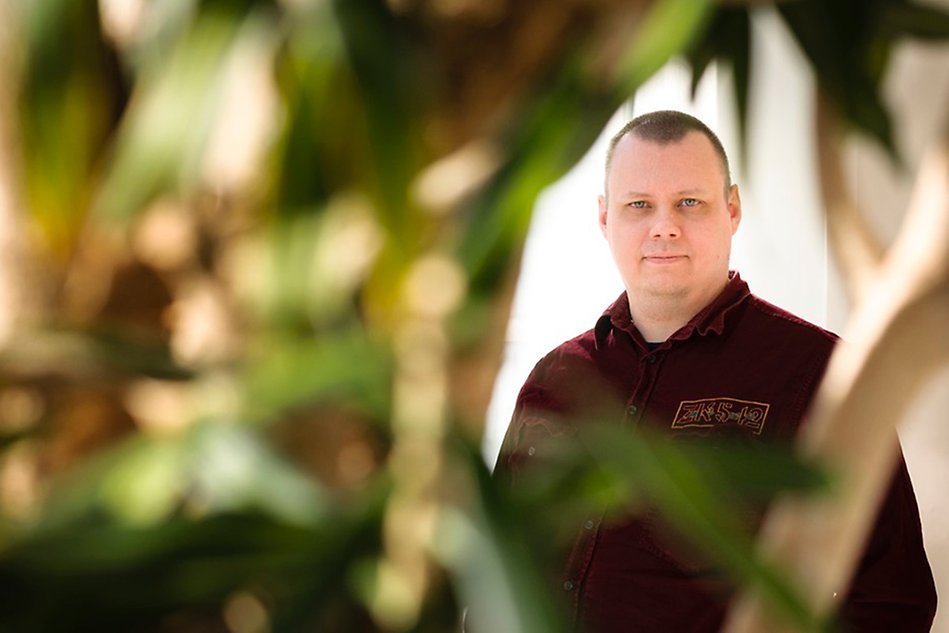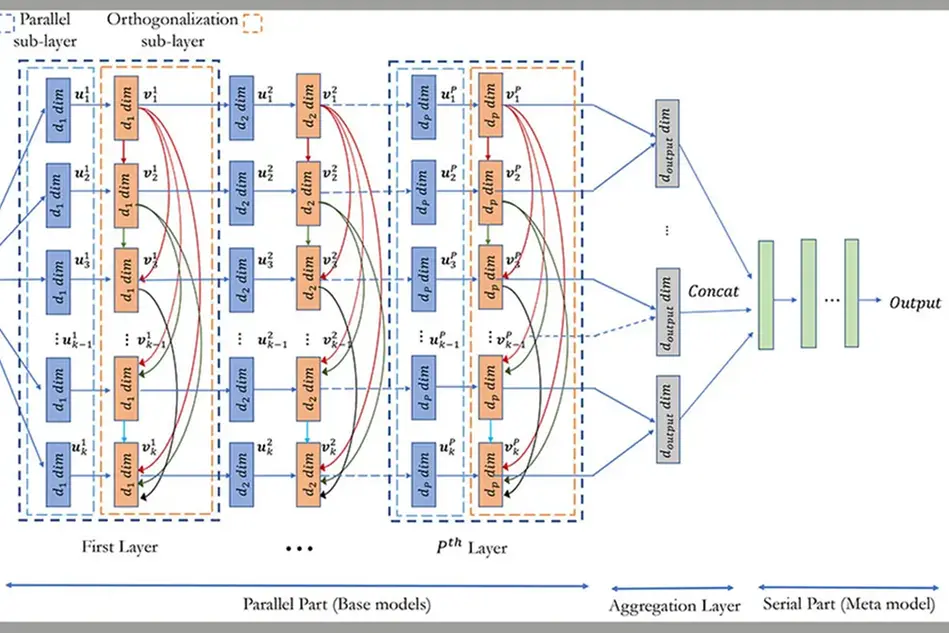Professor’s Portrait: “Life would be boring without difficult problems”
Slawomir Nowaczyk is a Professor in Machine Learning and his research is about the discovery of interesting patterns and relations in large amounts of data – knowledge that can be used to avoid vehicle breakdowns or blood pressure spikes in humans. It takes social skills and a creative hunger to do this in collaboration with business representatives and health care professionals.

”I first became interested in artificial intelligence and especially machine learning during my Master studies, since it appeared to be the ultimate solution to all computational problems.”
Slawomir Nowaczyk, Professor in Machine Learning
Slawomir Nowaczyk doesn’t shy away from a challenge. In fact, the opposite:
”I can see in PhD students, when they encounter a really difficult problem, that it brings them down. At that point I say to them, ‘don’t be sad, be happy, you are going to get a PhD thesis out of this problem. It’s good that not everything is solved, if that was the case you couldn’t become a researcher’ ”, says Slawomir Nowaczyk and adds:
“Life would be really boring without difficult problems.”
In broad terms, Slawomir Nowaczyk’s research aims at making computers more ‘intelligent’.
“That means they can become more efficient at solving their tasks”.
Discoveries and observation
Instead of telling computers precisely what to do in a step-by-step algorithm, Slawomir Nowaczyk wants them to ‘discover’ new facts, rules and principles by, in a way, observing the world around them. Not unlike humans do.
“I firmly believe that true artificially intelligent systems must be able to handle events that their designers could not imagine. I first became interested in artificial intelligence, AI, and especially machine learning, ML, during my Master studies, since it appeared to be the ultimate solution to all computational problems. Since then, I have spent most of my career trying to understand the actual limitations of those methods. More recently, I am focusing on self-organising and semi-supervised approaches, including ‘transfer learning’”.

“The Center for Applied Intelligent Systems Research, CAISR, largely owes its success to a unique research culture. I joined CAISR in November 2010, and I immediately understood that this is the right place for me – a place where I can contribute to building a truly exceptional research environment. After ten years, I have no less passion than I had on that first day, especially as I see all the great changes that has taken place” says Slawomir Nowaczyk.
One particularly exciting application area for ML, according to Slawomir Nowaczyk, is predictive maintenance, where sensor data is used to anticipate failures of complex systems before they happen, in order to optimise repair schedules in vehicles.
“Over the years, I have been doing research in many different areas, including the automotive industry, the energy sector, manufacturing and healthcare. From the machine learning or data science perspective, they all share many similarities. It is very exciting to be able to find synergies across many different projects”.
Many irons in the fire
Slawomir Nowaczyk sees teaching as an integral part of being a researcher and a professor. Partly because it is important to the University, partly as a way to reach people. He tries to be the kind of teacher he once wanted to have.
“However, the teaching process at the University cannot be specifically geared towards the minority of people who focus on an academic career. A teacher’s task is to help everybody, not only those with similar interests. It was enlightening to discover all the different ways in which people learn”.
Slawomir Nowaczyk always has a lot going on. He is the research leader at the School of Information Technology, he supervises PhD students, organises summer schools and workshops at international conferences, is a member of Swedish AI Society board, all as part of CAISR, Center for Applied Intelligent Systems Research. He is also involved in different development activities, apart from leading several research projects within the Technology Area of Aware Intelligent Systems.
Exampels of current research projects
One research project is EVE – Extending Life of Vehicles within Electromobility Era
in collaboration with Volvo Group, which aims to develop AI models for all vital components in the electrical driveline of heavy-duty vehicles, such as buses and trucks. By performing maintenance in the right way at the right time, the lifetime of the vehicles can be extended. However, the rapid shift from diesel to electric motors means that there is a lack of historical observations pertinent to the electric driveline components.
“This highlights the need to go beyond the traditional ML algorithms and enable discovery of patterns across similar domains and transfer it to the desired context”, he says and adds:
“The knowledge gained through our research with for example EVE, as an example, will bring long term benefits by putting the Swedish industry and research at the forefront of the rapidly growing area of high-quality premium electromobility. Furthermore, each new step with these algorithms provides potential benefits of applying them in the future to solve new, even more challenging problems.”
Another, newly started project, XPM – eXplainable Predictive Maintenance with partners in Poland, France and Portugal, is about developing several different types of explanations for AI decisions and integrating them into existing human-centred repair and maintenance processes. The usefulness of the results will be demonstrated in four case studies about electric vehicles, metro trains, steel plant and wind farms.
”The decisions made by ’AI black-box models’ are often difficult for human experts to understand – and therefore to act upon. The complete repair plan and maintenance actions that must be performed based on the detected symptoms of damage and wear often require complex reasoning and planning processes, involving many actors and balancing different priorities. It is not realistic to expect this complete solution to be created automatically – there is too much context that needs to be taken into account. Therefore, operators, technicians and managers require insights to understand what is happening, why it is happening, and how to react. Today’s mostly black-box AI does not provide these insights, nor does it support experts in making maintenance decisions based on the deviations it detects. The effectiveness of the predictive maintenance system depends much less on the accuracy of the alarms the AI raises than on the relevancy of the actions operators perform based on these alarms.”
Yet another current project, iMedA, Improving Medication Adherence through Person-Centered Care and Adaptive Interventions aims at developing digital support for persons with high blood pressure.
More about projects:
Creativity and brainstorming
Slawomir Nowaczyk went from Poznań, Poland, to Lund, Sweden, for his PhD studies. After his postdoc in Cracow, Poland at AGH University of Science and Technology, he returned to Sweden. One reason for him to choose to work in Sweden was that the culture to do research in collaboration is stronger in Sweden than in Poland.
“My first position here was part of a strategy to strengthen the cooperation between Halmstad University and the industry, in particular Volvo Group.”
He started to contribute, soon he was leading projects.
“The constant struggle of finding the right balance between research and business aspects adds a whole new dimension to problem solving.”

Slawomir Nowaczyk’s research is very algorithm oriented, he designs new methods for computers to generalise and understand data. “The most exciting aspect of that work is seeing how broadly applicable those methods can be. It is common for me to read a paper on some recent development and immediately see how those techniques can be used in a completely different context.” (From the report: Parallel orthogonal deep neural network. https://www.sciencedirect.com/science/article/pii/S0893608021000824)
What does it take to be good researcher in the field of Machine Learning?
“Creativity”, Slawomir Nowaczyk says and continues:
“It depends on what person you are. Other researchers might sit in their office and write code and papers on the own, but that differs from my style. I work constantly with PhD students, collaborators from companies and so forth. The most difficult part is to have ideas, and we all the time use creative exercises for brainstorming to come up with ideas and inventions – and then we test”, says Slawomir Nowaczyk:
“Once you have an idea for a new algorithm, it is not difficult to try it out. Testing takes more engineering skills.”
So what drives him in his job?
“It is very stimulating to be a researcher because when you write about your research you know something that no one else in the whole world knows. It’s a marvellous feeling. And you have a lot of freedom, even if you have to convince financiers that your ideas are interesting.”
Humans have an incredible ability to always learn new things and find complex relations between different pieces of acquired knowledge – which is closely related to our natural curiosity.
“That is the core of the ‘self-awareness’ concept, something that today's AI systems are very much lacking, and where I believe my research contribution can make a difference.”
AI as a future companion
ML nowadays is very successful in creating solutions that work well for specific application domains.
“The next step for me is to obtain deeper understanding of fundamental concepts, allowing us to build a general theory on top of those successful application examples.”
In the future, Slawomir Nowaczyk expects that impact on society related to improved trustworthiness of AI systems will be apparent.
“Today, most people do not really understand how AI take decisions, so we treat it as a somewhat scary black box. However, in the future, it will become much more of a companion that we interact with, often in a deep and meaningful way. This will open many new and exciting possibilities”.
Text: Kristina Rörström
Photos: Joachim Brink, Istock and Peyman Mashhadi (algoritm)
More about Slawomir Nowaczyk
Slawomir Nowaczyk was born in 1978 in Poznań, Poland. He finished his Master's in Computer Science at Poznan University of Technology, Electrical Engineering Faculty, in 2002. His doctoral thesis in 2008 from Lund University has the title ”Conditional Partial Plans for Rational Situated Agents Capable of Deductive Reasoning and Inductive Learning”.
After a postdoc position in Cracow, Slawomir Nowaczyk started as an Associate Senior Lecturer at the School of Information Technology at Halmstad University in 2010. He became a Docent reader in 2015 and a Professor in Machine Learning in 2020.

